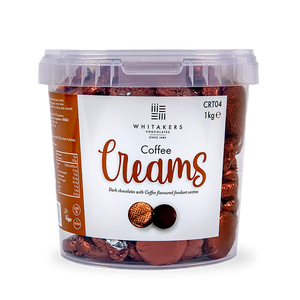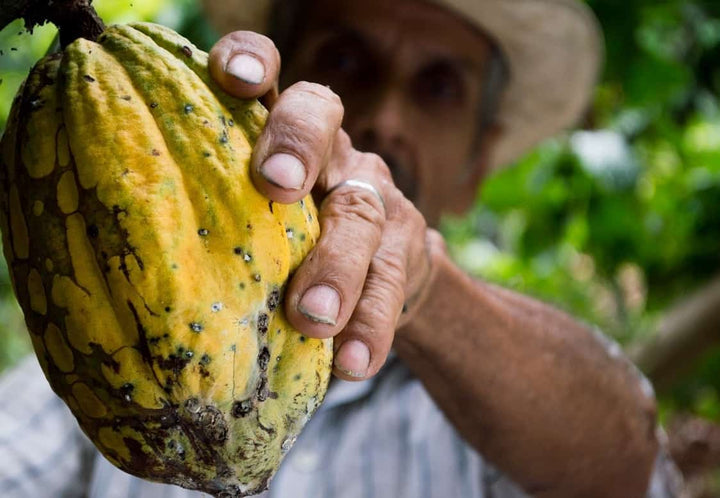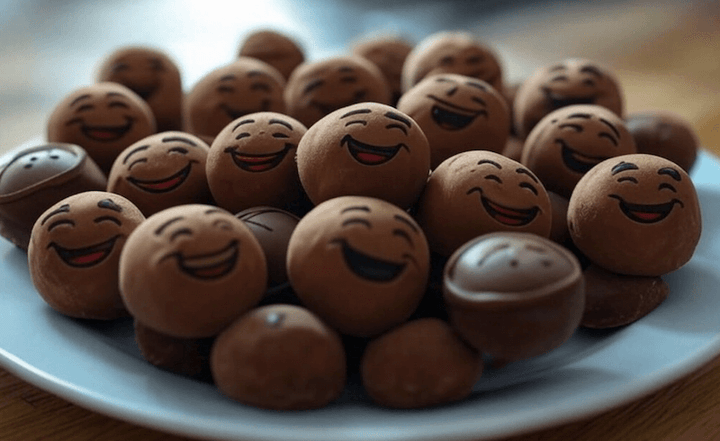In this post, we are looking into the delicious world of cocoa, the beating heart of our favourite chocolate bars.
But we're not discussing just any part of cocoa; we're looking at cocoa solids.
Let's get started...
What Are Cocoa Solids?
Cocoa solids are the non-fat part of the cocoa bean used in chocolate production.
When you look at the ingredients of your favourite chocolate bar and see the percentage of cocoa solids listed, that directly indicates how much of the chocolate is derived from the cocoa bean itself, excluding the cocoa butter (the fat component).
Related: Delicious and Easy Plant-Based Baking Recipes.
How Are Cocoa Solids Made?
Making cocoa solids is a journey that starts at the tropical cocoa plantation and ends in your favourite chocolate bar.
-
Harvesting: The process begins with the harvesting of ripe cocoa pods from the Theobroma cacao tree. These pods are opened to reveal a moist, white pulp enclosing around 20 to 60 seeds - these are the cocoa beans.
-
Fermentation: The beans are then placed in shallow containers or directly on banana leaves, covered and left to ferment for a period of two to nine days. During fermentation, the sugars within the pulp are converted into acids, heat is produced, and the beans change colour from a pale yellow to a rich, deep brown. It's this fermentation process that kickstarts the development of the chocolate flavours we all adore.
-
Drying: Post-fermentation, the cocoa beans are spread out to dry in the sun. Drying reduces the moisture content, making the beans less susceptible to mould and more suitable for storage and transportation.
-
Roasting: Upon reaching the factory, the dried beans are cleaned and roasted. Roasting further develops the flavour and changes the beans' texture, making them brittle and easier to crush.
-
Crushing and Winnowing: The roasted beans are then crushed to separate the nibs (the inner part of the bean) from the shell. The shell is removed in a process known as winnowing, and the resulting cocoa nibs are what's used to make chocolate.
-
Grinding: The nibs are ground, producing a thick, viscous liquid known as chocolate liquor or cocoa mass. Despite the name, it contains no alcohol! This cocoa mass is a combination of cocoa solids and cocoa butter.
-
Pressing: Finally, to obtain cocoa solids, the chocolate liquor is pressed to squeeze out the cocoa butter. The remaining hard, dry cake is the cocoa solids, which is then ground down to create cocoa powder.
And there you have it, the journey of cocoa solids from bean to bar, showcasing the effort, precision, and passion that goes into creating the cornerstone of our beloved chocolate.

Why is the Amount of Cocoa Solids Important?
The amount of cocoa solids in a chocolate product is of utmost importance as it significantly influences the taste, texture, and even health benefits of the chocolate.
Taste and Texture: Cocoa solids are responsible for the characteristic bitter, full-bodied taste of chocolate.
In general, the higher the percentage of cocoa solids, the darker and more bitter the chocolate will be.
High-quality dark chocolate usually contains between 70% to 85% cocoa solids, giving it that robust, deeply chocolaty taste that's loved by many.
In contrast, milk chocolate contains less cocoa solids, usually around 20% to 30%, resulting in a sweeter, milder flavour and a creamier texture, owing to the additional milk and sugar.
Quality: The percentage of cocoa solids can also serve as an indicator of the quality of the chocolate.
A higher cocoa content generally suggests less room for fillers like sugar, vegetable oils, and other additives.
Hence, a chocolate bar with a high cocoa solids percentage is often of superior quality.
Health Benefits: Cocoa solids are rich in flavonoids, natural compounds associated with several health benefits, such as reducing inflammation and improving heart health.
Therefore, chocolate with a higher percentage of cocoa solids often provides more of these beneficial compounds.
Dietary Preferences: For individuals following specific diets, such as a vegan or dairy-free diet, chocolates with a high cocoa solids content (and no milk products) can be a preferred choice.
Similarly, those aiming to reduce sugar intake may opt for dark chocolate with a higher percentage of cocoa solids.
So, the amount of cocoa solids in chocolate plays a crucial role in defining the chocolate's taste, quality, potential health benefits, and its suitability for various dietary requirements.
Related Post: Chocolate Refining.
How Many Cocoa Solids in Dark Chocolate?
The amount of cocoa solids in dark chocolate can vary quite substantially, largely depending on the desired taste and quality of the end product.
As a general rule, however, dark chocolate typically contains between 70% to 85% cocoa solids.
This high percentage gives dark chocolate its distinct, richly bitter flavour and darker colour.
On the more intense end of the scale, you'll find ultra-dark or extra-bitter chocolate, which can contain up to 90% or even 99% cocoa solids.
This type of chocolate is not for the faint-hearted, as it has a very strong, intensely bitter flavour.
It's worth noting that the percentage of cocoa solids is often listed prominently on chocolate packaging, especially for dark chocolates.
The cocoa percentage can serve as a useful guide to the intensity of the chocolate's flavour - the higher the percentage, the stronger and more bitter the taste.
How Many Cocoa Solids in Milk Chocolate?
Milk chocolate, renowned for its creamy, sweet and mild taste, contains substantially fewer cocoa solids compared to its darker counterpart.
The precise amount can vary, but typically you'll find that milk chocolate contains around 20% to 30% cocoa solids.
The lower cocoa solids content in milk chocolate is due to the addition of milk (or milk powder), as well as more sugar, both of which dilute the concentration of cocoa.
This results in a sweeter, smoother, and creamier texture compared to dark chocolate, which tends to have a more pronounced cocoa flavour and a slight bitterness.
Remember, the amount of cocoa solids can be a marker of quality - a higher cocoa percentage often indicates less room for fillers and other additives.
However, it all comes down to personal preference.
If you enjoy milder, creamier chocolate, then milk chocolate with its lower cocoa solids content is the perfect choice.
How Many Cocoa Solids in White Chocolate?
White chocolate stands apart from its dark and milk counterparts in that it contains no cocoa solids at all.
White chocolate is primarily composed of cocoa butter, the fatty part of the cocoa bean, mixed with sugar and milk solids.
The absence of cocoa solids is what gives white chocolate its pale colour and distinctly creamy, sweet, and buttery flavour profile.
Strict regulations in many countries, including the UK, specify that white chocolate must contain at least 20% cocoa butter to qualify as 'white chocolate'.
However, there are no cocoa solids in traditional white chocolate, which is why it lacks the characteristic bitter taste and darker colour of other chocolates.
Do Cocoa Solids Contain Dairy Products?
Cocoa solids themselves do not contain any dairy products.
They're derived directly from the cocoa bean and represent the non-fat portion of the bean, resulting in a product that's naturally vegan and dairy-free.
However, when it comes to chocolate, the situation can be somewhat different.
While dark chocolate, which tends to have a high cocoa solids content, is often made without the use of any dairy products, it's always crucial to check the ingredients list.
Some manufacturers do use milk derivatives or other dairy products in their recipes, even in dark chocolate.
Milk chocolate, as the name suggests, does contain dairy in the form of milk or milk powder, and so does white chocolate.
These chocolates have a lower percentage of cocoa solids and are not suitable for those avoiding dairy.
Always check the label if you have dietary restrictions or allergies.
Are Cocoa Solids Vegan?
Yes, cocoa solids are indeed vegan. They're derived directly from the cocoa bean, making them a plant-based product and thus naturally suitable for a vegan diet.
However, whilst the cocoa solids themselves are vegan, not all chocolate is.
Many chocolates, particularly milk and white varieties, contain dairy products which are not vegan.
Some dark chocolates, despite having a high percentage of cocoa solids, may also contain dairy or have been processed in a facility that handles dairy, posing a risk of cross-contamination.
Cocoa Powder vs Solids - What’s the Difference?
While both cocoa powder and cocoa solids are derived from the same source – the mighty cocoa bean – they are indeed different products, each with its distinct place in the world of chocolate and baking.
Cocoa Solids: These are the non-fat part of the cocoa bean that gives chocolate its fundamental flavour and colour.
When you see a percentage on a chocolate bar label, it's indicating the proportion of the product that's made up of these cocoa solids (and cocoa butter) directly derived from the cocoa bean.
Cocoa Powder: This is made by taking the cocoa mass (a mixture of cocoa solids and cocoa butter) and pressing it to remove most of the cocoa butter.
The remaining dry substance, primarily made up of cocoa solids, is then ground into a fine powder.
This powder, packed with the rich flavour of cocoa, is what we commonly use in baking and cooking.
So, to sum up, cocoa solids are the key components that give chocolate its characteristic flavour and are present in all forms of chocolate, from white to dark.
On the other hand, cocoa powder is a product made from cocoa solids, with most of the fat removed, typically used in baking and cooking to infuse a strong, chocolaty flavour.
Where Can You Buy Chocolate with High Cocoao Content?
If you're seeking high-quality chocolate with a generous cocoa content, look no further than Whitakers Chocolates.
A proud British company with an unwavering commitment to quality and taste, Whitakers offers a delightful array of chocolates crafted to their unique, meticulously developed recipes.
The secret behind the distinct Whitakers taste lies in the perfect balance of cocoa solids used.
Our dark chocolate boasts a minimum of 55% cocoa solids, striking a harmony between rich depth and a smooth finish that chocolate aficionados will adore.
This composition ensures that the bitter tones are beautifully balanced, without compromising the chocolate's full-bodied richness.
For those who prefer the creamier notes of milk chocolate, Whitakers offers a product with at least 34% cocoa solids.
This higher-than-average cocoa content gives the milk chocolate a luxurious depth while still maintaining the smooth, creamy finish that makes milk chocolate a universal favourite.
Over the years, we’ve meticulously refined it's cocoa solid percentages across its range, finding just the right balance to satisfy discerning palates while still delivering the recognisable and beloved Whitakers taste.
And for the passionate bakers amongst you, We have developed a standout product: the Easymelt couverture chocolate.
These mini shards of dark chocolate, with a minimum of 55% cocoa solids, are designed to melt quickly and evenly.
They're the ideal choice for moulding, dipping, flavouring and decorating in your baking endeavours.
Easymelt brings the robust taste of Whitakers chocolate to your own culinary creations, elevating them with a rich, smooth chocolate taste.
So, for a fine balance of quality and taste, a visit to Whitakers Chocolates is a must for any chocolate lover.
Our wide range, combining years of experience with a continuous quest for perfection, caters to all tastes and requirements.
Here are a few of our favourites:
-
Easymelt 55% dark chocolate mini shards
- Smooth and creamy red foiled chocolate hearts
Some Notes From an Expert Chocolatier
With years of experience and a deep love for the craft, I've had the privilege of contributing to Whitakers Chocolates' journey in creating truly unforgettable chocolate experiences.
Central to this process is understanding the vital role that cocoa solids play in the difference between simply 'ok' chocolate and truly great chocolate.
Firstly, cocoa solids are the heart and soul of any chocolate, providing the distinct, full-bodied flavour that chocolate lovers crave.
The percentage of cocoa solids can greatly influence the chocolate's taste, texture and overall quality.
Too few cocoa solids can result in a bar that's overly sweet and lacking in the rich depth that comes from the cocoa bean.
On the other hand, a very high percentage might lead to a chocolate that's overly bitter and challenging for some palates to enjoy.
At Whitakers, we've found our sweet spot.
Our dark chocolate has a minimum of 55% cocoa solids, a level that we've found offers a well-balanced, rich, but smooth taste.
Our milk chocolate, with a minimum of 34% cocoa solids, provides that comforting creamy flavour while still carrying a note of the cocoa's natural depth.
Over the years, we've meticulously experimented with various cocoa solid percentages to achieve this balance.
It's been a journey of understanding not just the cocoa bean itself, but also our customers' preferences and the subtleties that make each Whitakers chocolate product special.
Moreover, it's not only about the amount of cocoa solids, but also the quality.
We source high-quality cocoa, and we carefully control the roasting and grinding processes to ensure that the natural flavours of the cocoa bean are preserved and enhanced.
It's this focus on quality at every stage of the process that elevates our chocolate from being just 'ok' to truly great.
Finally, for those of you who are baking enthusiasts, we've created our Easymelt couverture chocolate.
With its minimum 55% cocoa solids, it's perfect for bringing that rich, smooth Whitakers taste to your own kitchen creations.
Final Notes On Cocoa Solids
Cocoa solids are the powerhouse of chocolate, imparting the essential flavours, colour, and to an extent, the texture that we associate with this beloved treat.
The percentage of cocoa solids in a bar of chocolate directly influences its taste and quality - higher percentages lead to a more intense, robust flavour, while lower percentages yield a smoother, milder taste.
In summary, cocoa solids are truly the heart of chocolate.






















